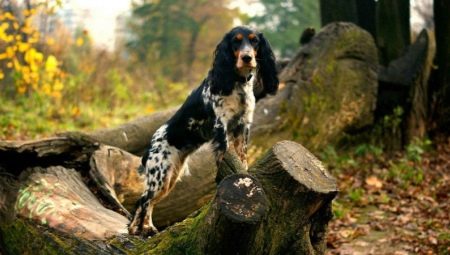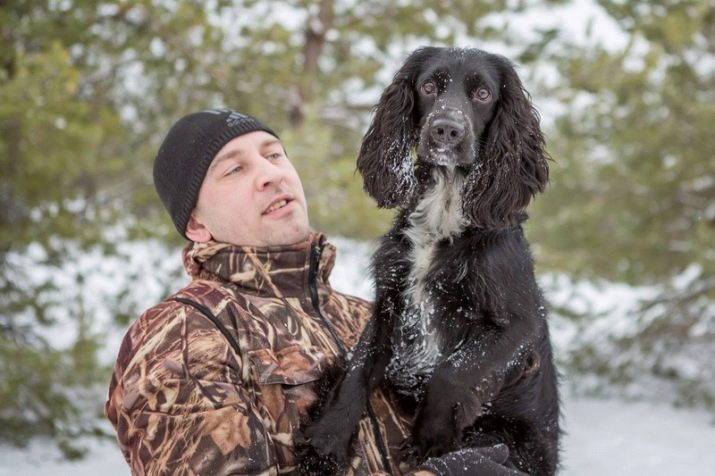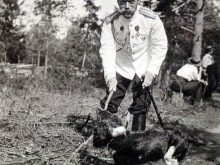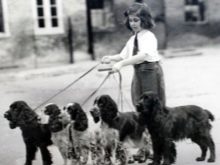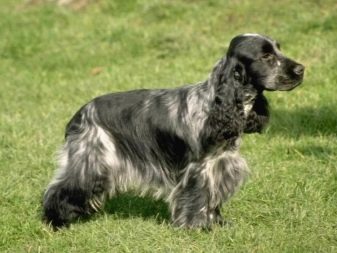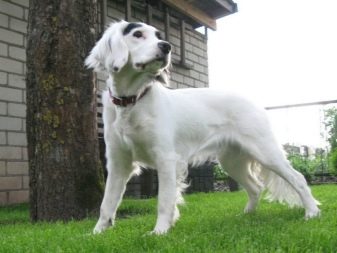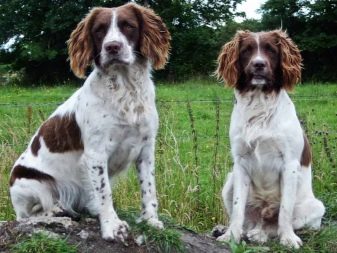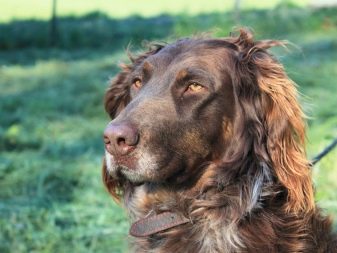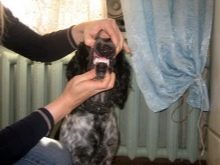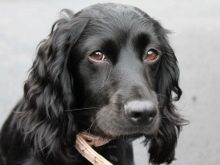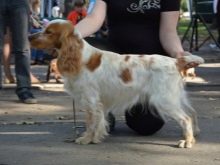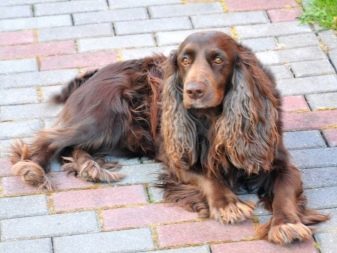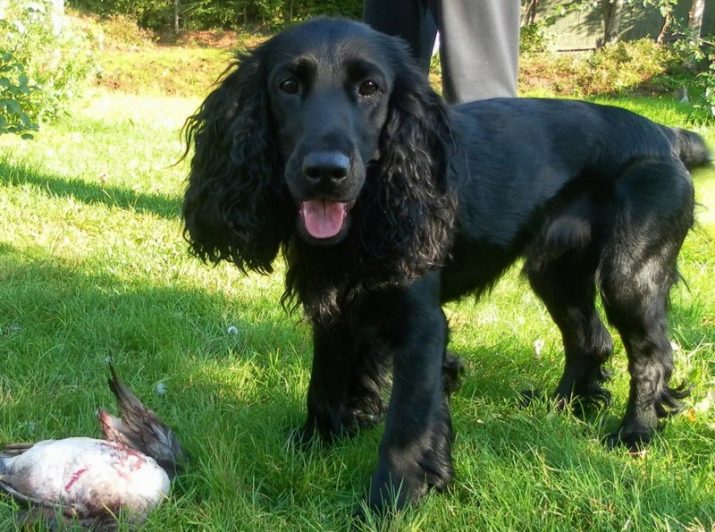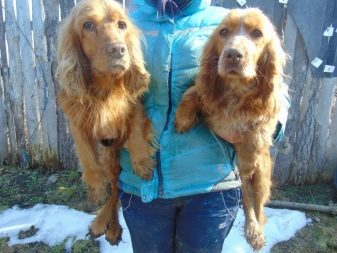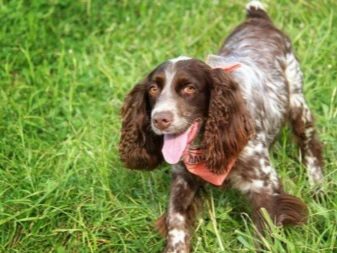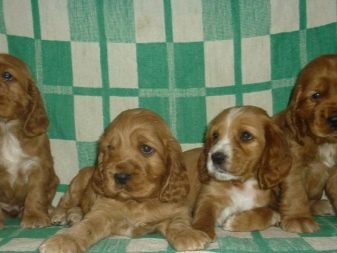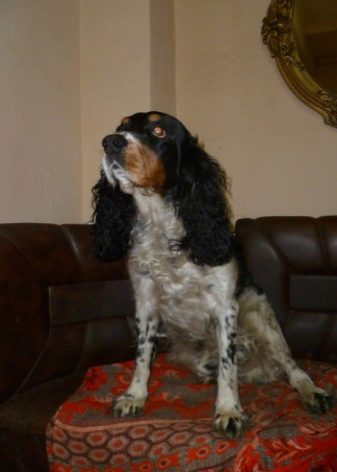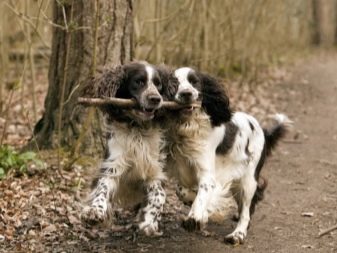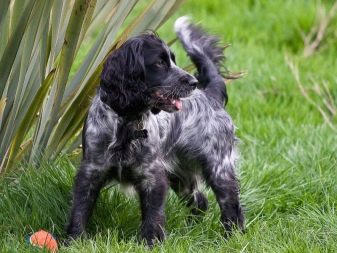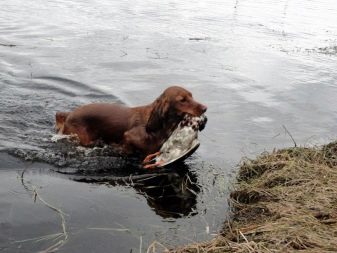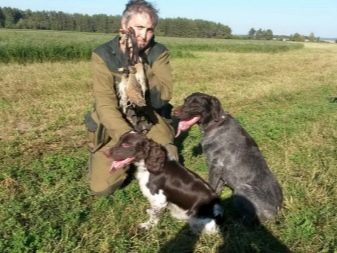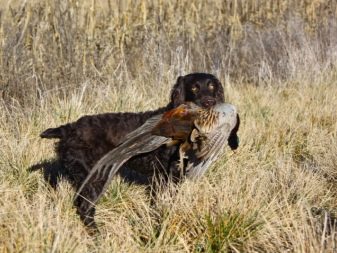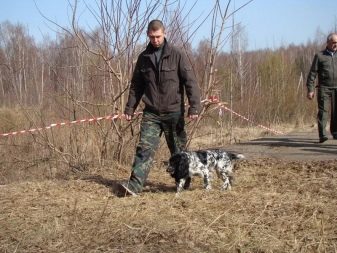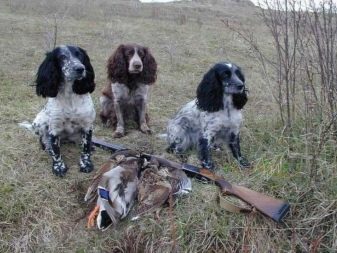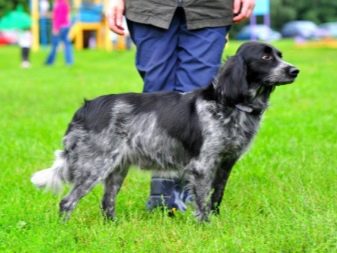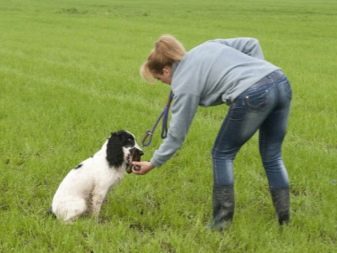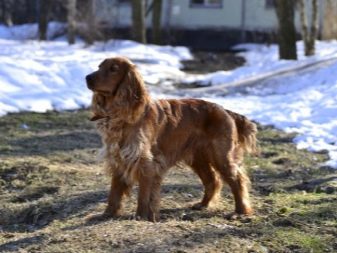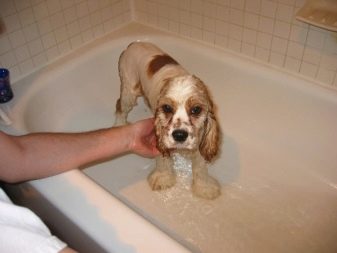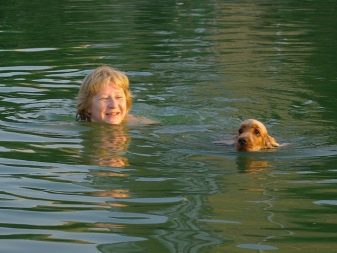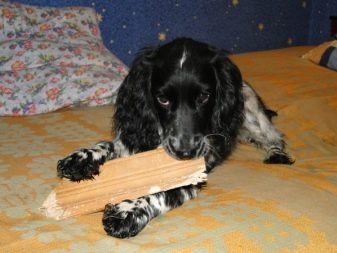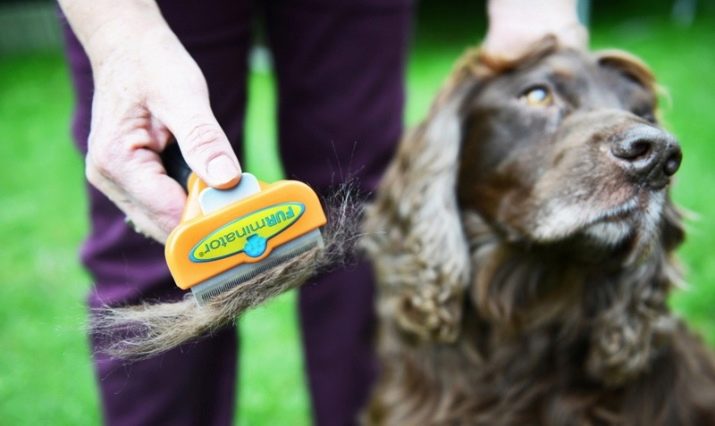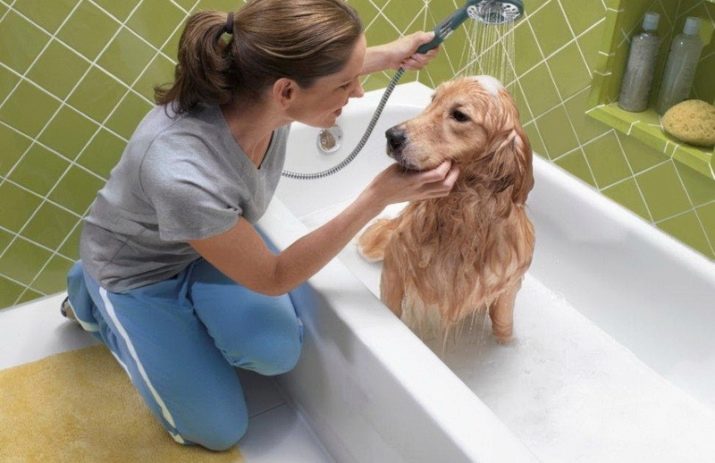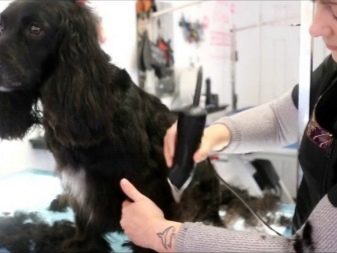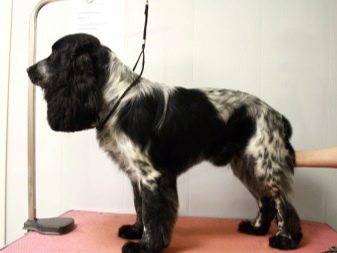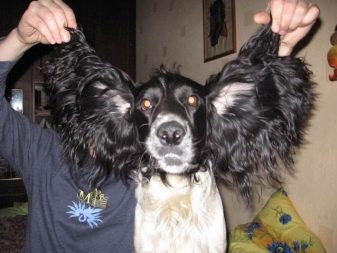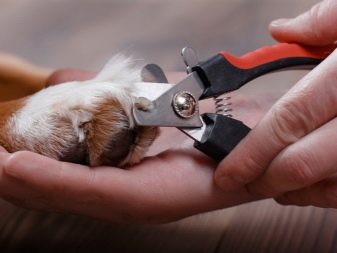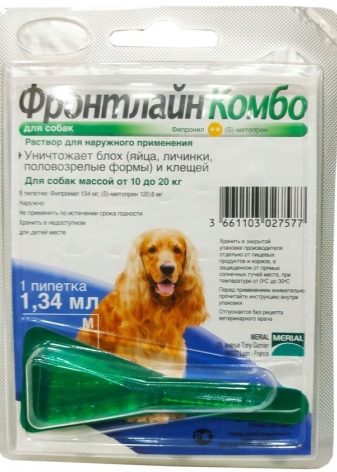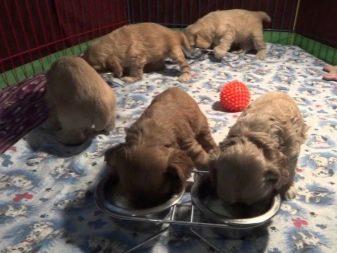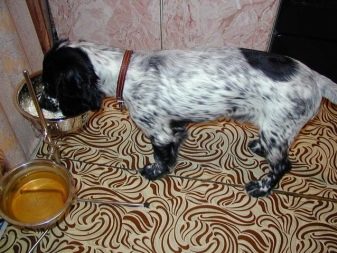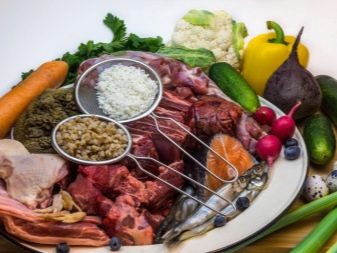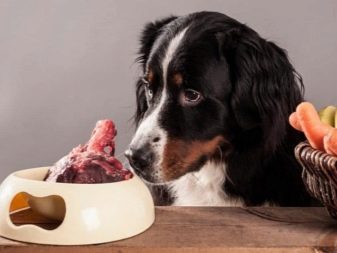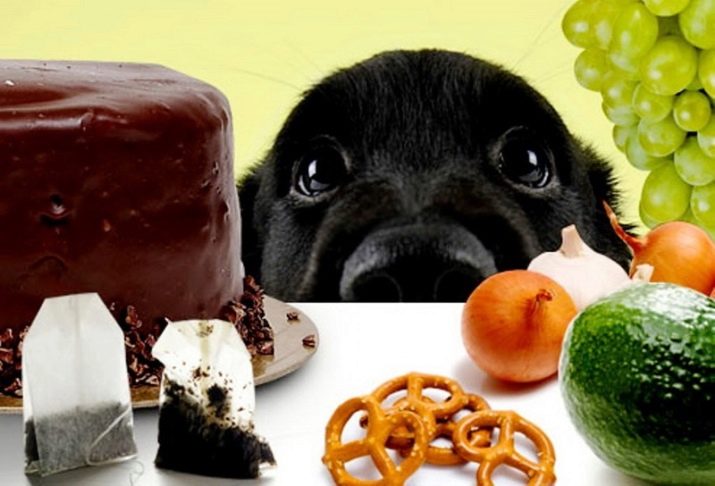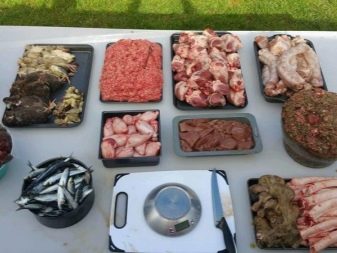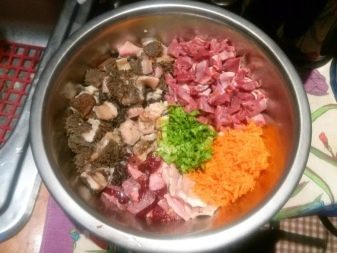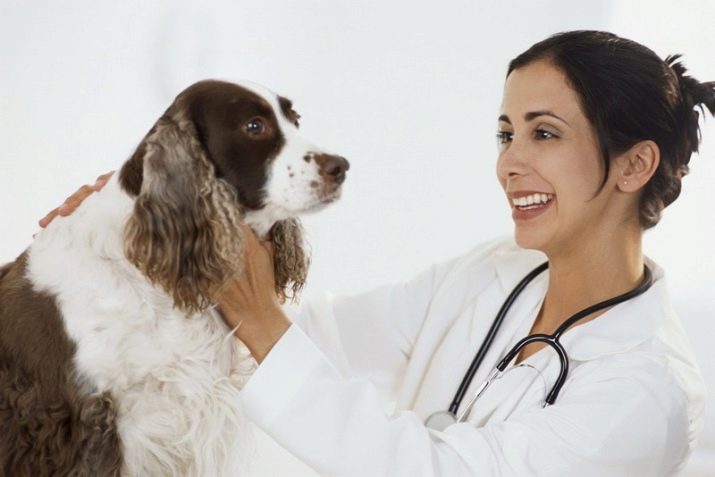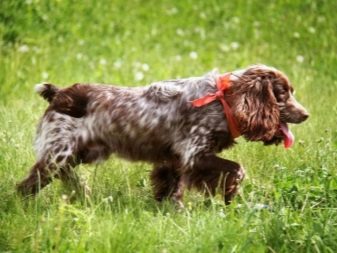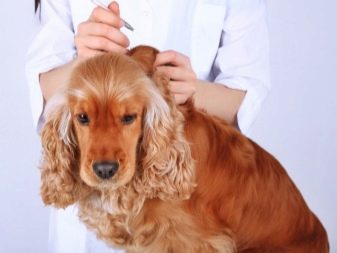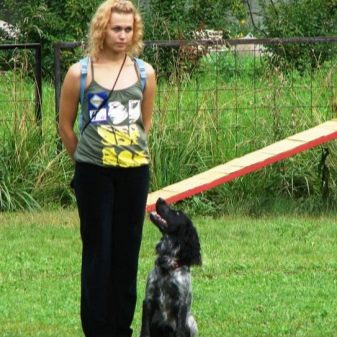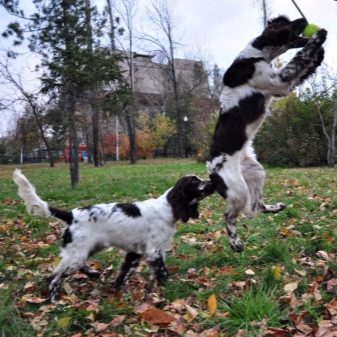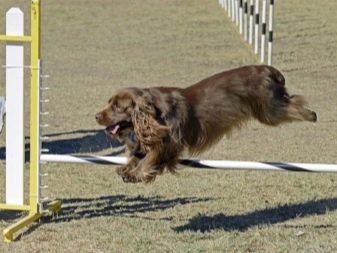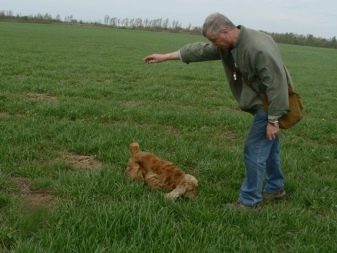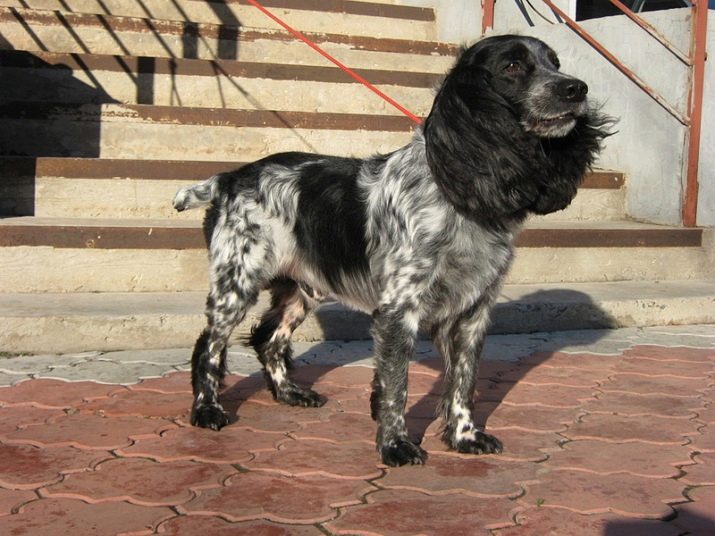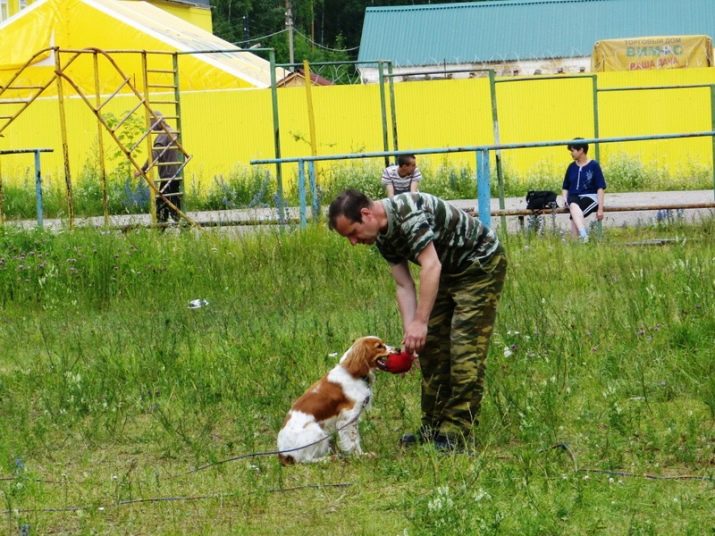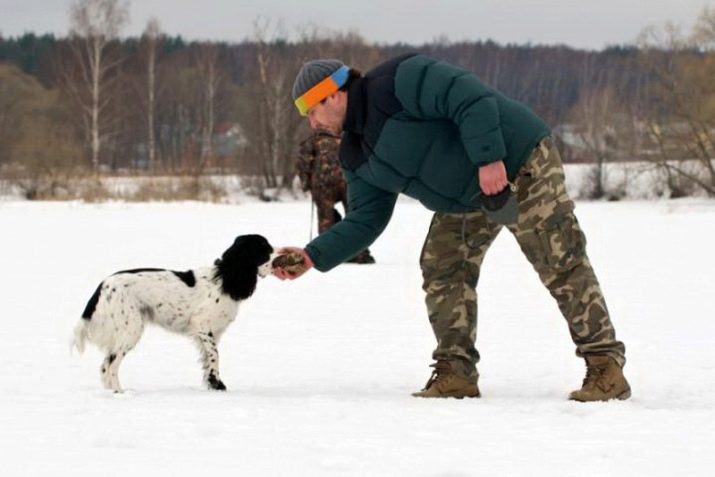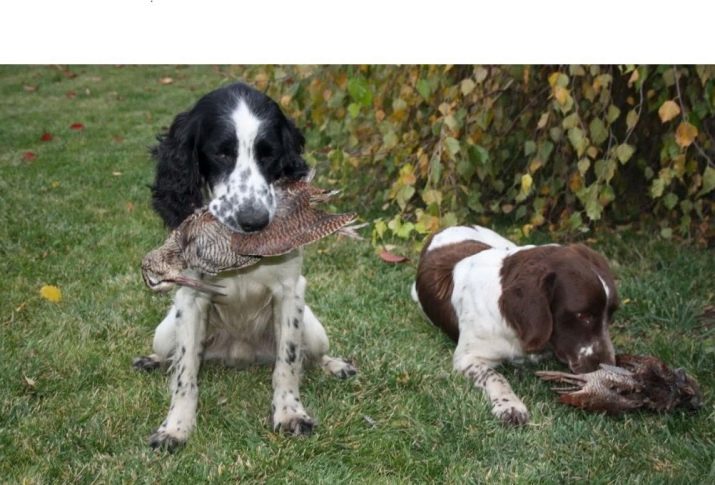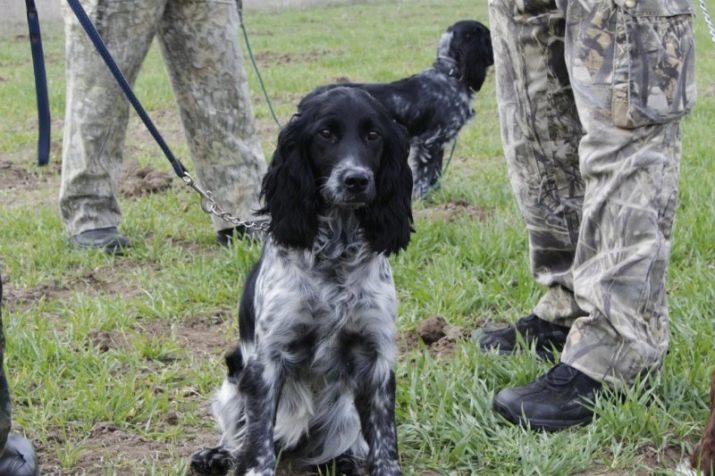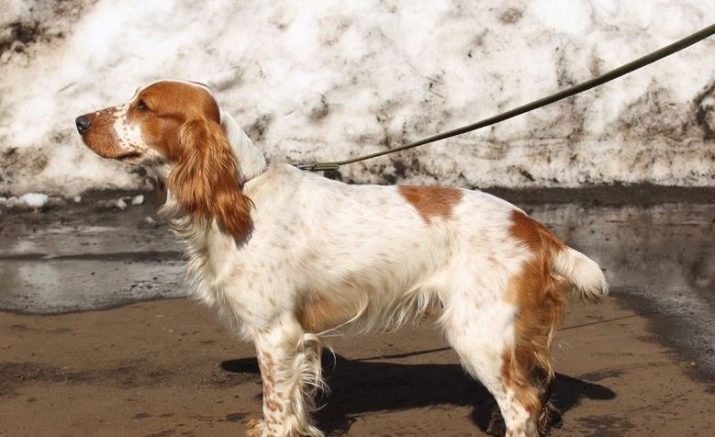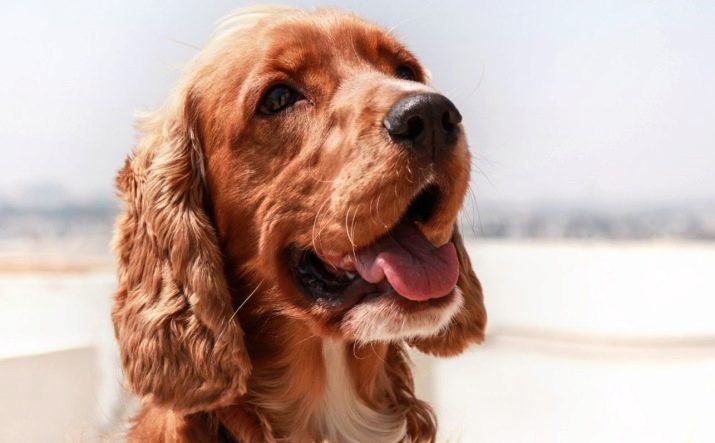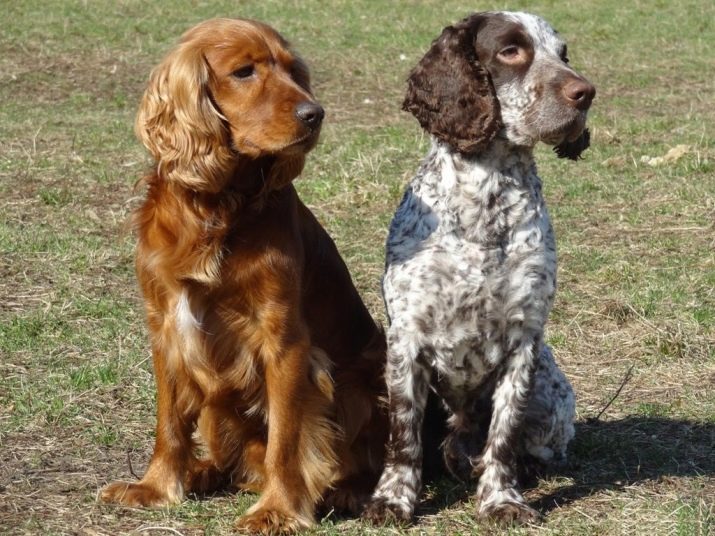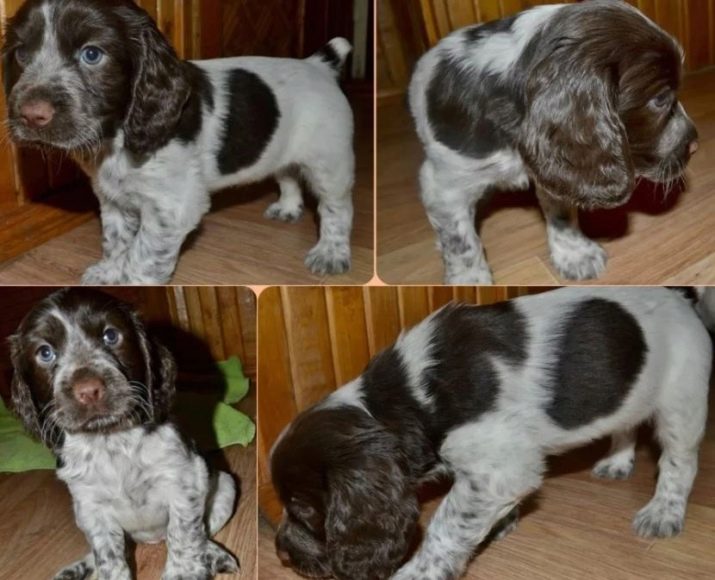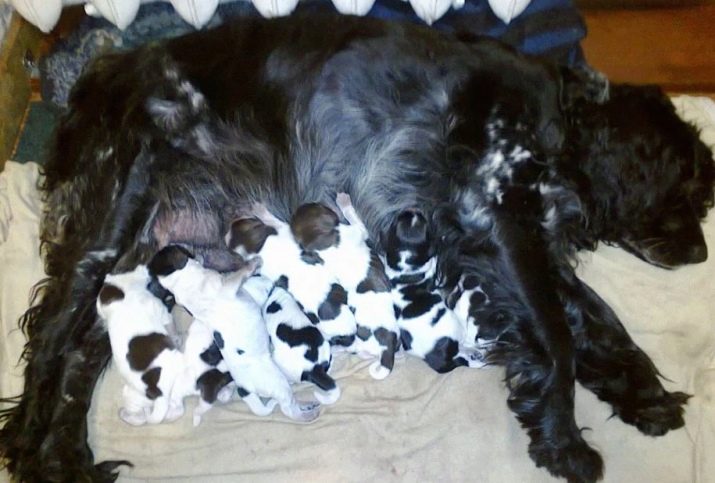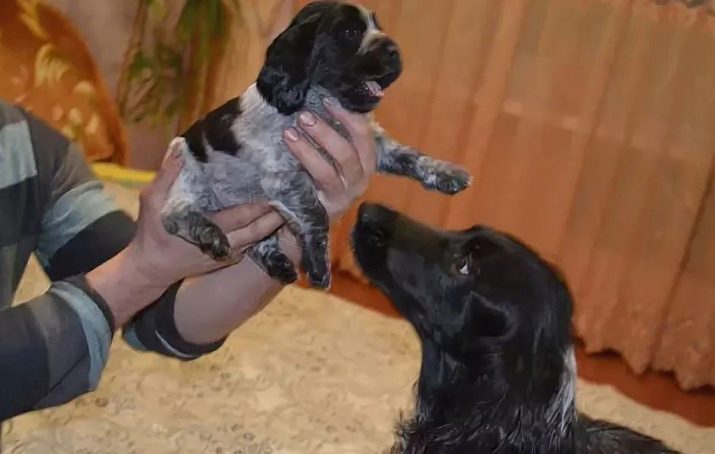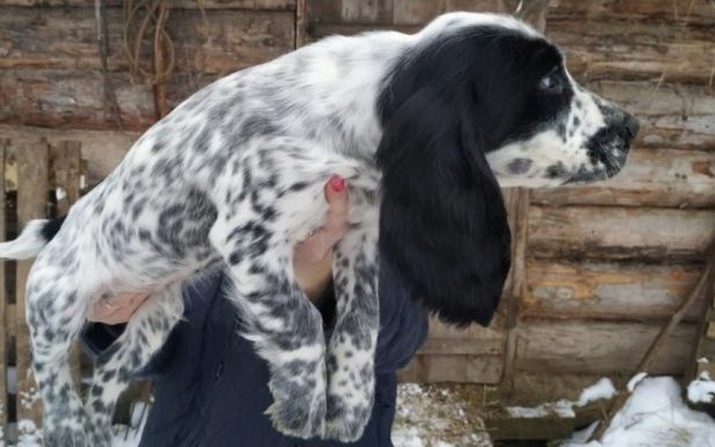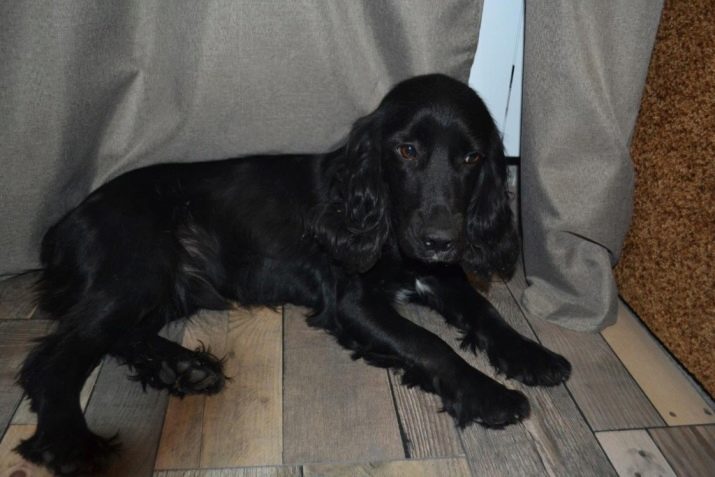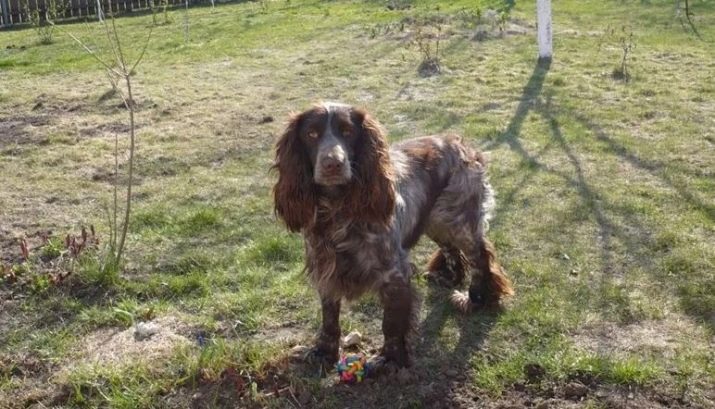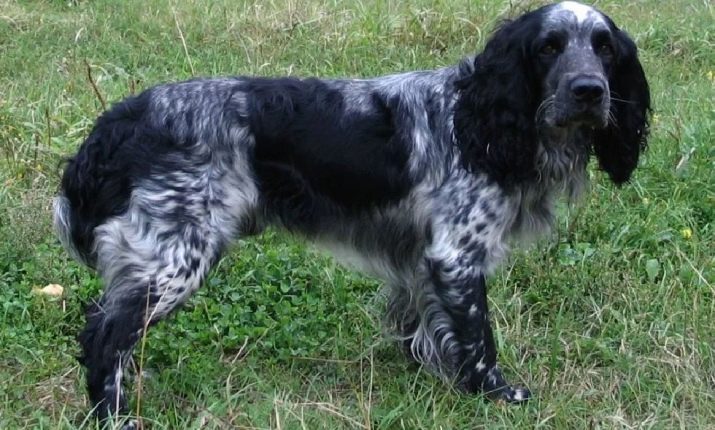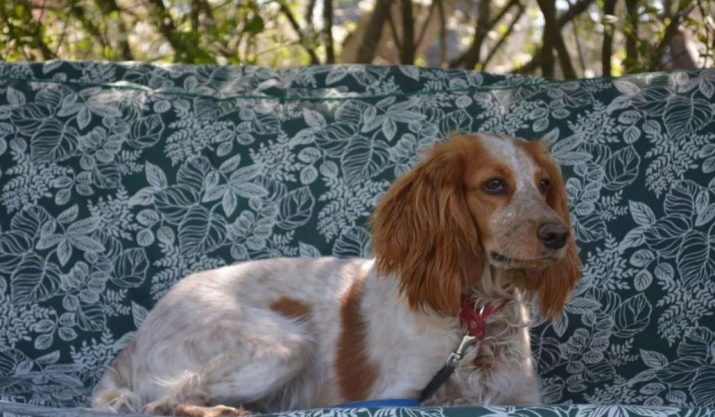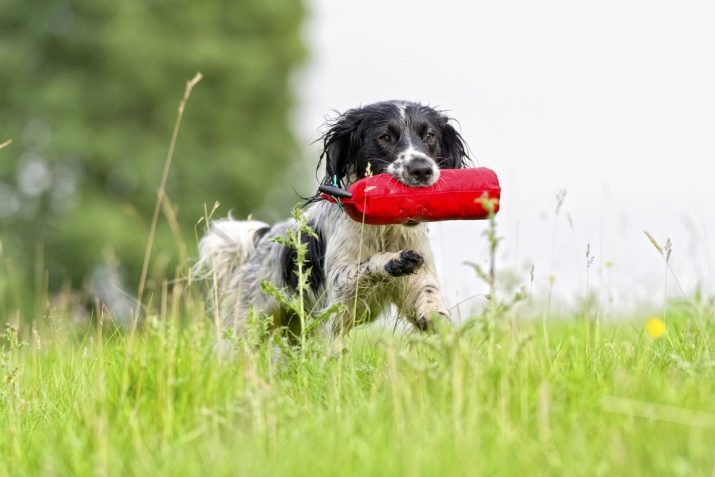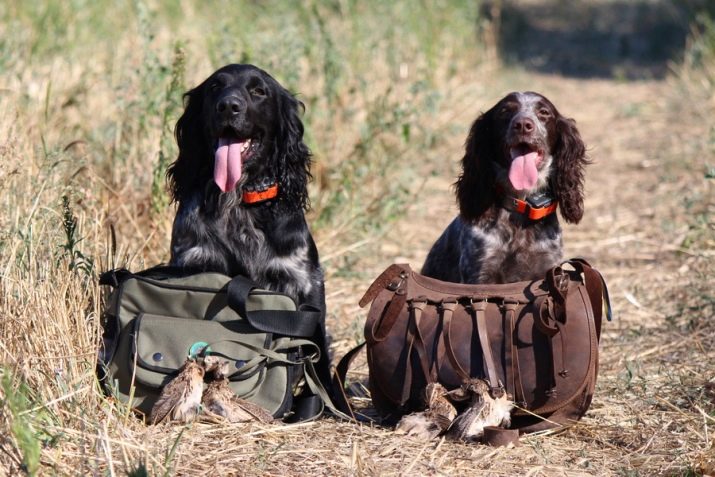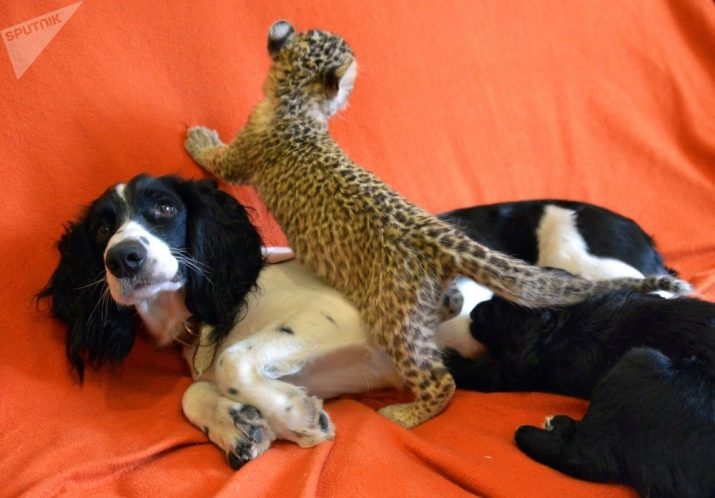Talk about hunting dog breeds can be continued almost indefinitely. But one of their underrated species is the Russian hunting spaniel. He is less known to a large number of people than huskies, dachshunds or greyhounds, but in fact is not inferior to them.
History of origin
In the last quarter of the XIX century, Cocker Spaniels began to be imported into the Russian Empire, but the squatness of this breed became an almost insurmountable obstacle in the organization of hunting. A new urgent task has emerged - the development of a not too demanding gun dog, which would not take up much space and be distinguished by its endurance. What is symbolic, such a new breed, like the Russian hunting spaniel, was created at the next historical stage. In 1931, a spaniel section was created in Leningrad. It was she who became the leading center engaged in the development of the breed.
The intermediate result was achieved by the end of the 1930s. At that time, a variety of spaniels also appeared in Moscow and Sverdlovsk. The decisive step was taken already in the postwar period. To do this, they used not only the preserved livestock, but also imported the best spaniels in the world. The first breed standard in the familiar form was approved in 1951.
After 15 years, he was somewhat changed. The next edition of the standard was adopted in 2000. In the 1990s, the number of the breed declined sharply, but over the past 20 years its new rise began. Now Russian hunting spaniels have firmly taken their place among the hunting dogs in our country. And therefore it is important to know what they are.
Description
Giving the characteristics of a dog of the Russian hunting spaniel breed, it should be noted that the world cynological association does not recognize this species. Therefore it is necessary to rely on information provided by the Russian canine federation. The breed is characterized by a strong, slightly squat body with a dry composition. The backbone is very strong, musculature is well developed. The chest is wide, has a great depth and length.
An important feature is good development of false edges. The withers also develops thoroughly, the back is straight and looks strong. A small ramp appears between withers and lower back. The lumbar part is saturated with muscles, has a relatively short length and protrudes slightly upwards. Relatively long and wide croup differs muscularity.
Dog's weight ranges from 13 to 18 kg. The standard provides for the density and elasticity of the skin, which does not have folds. The head is not too long, the cranial part is rather wide and has an oval configuration. Such moments are characteristic:
- forehead bulge;
- relatively small occipital protuberance;
- pronounced superciliary arches;
- parallelism of the skull and muzzle (with a well marked transition between them);
- the muzzle is broad at the top, but inferior in width to the cranium;
- some narrowing of the muzzle around the nose.
The teeth of a Russian spaniel are distinguished by their strength and good development. Scissor bite and dense overlap of the lower jaw with the upper jaw - these are two of their characteristic features. The eyes of the spaniels are oval, large in size.In most cases, the eyes are painted in a brown color (dark or light shade). Eye color usually corresponds to wool color.
The ears of a hunting spaniel are hanging, they are long and rounded at the ends. They are planted either along the line of the cut eyes, or above it. Ears tightly pressed to the cheekbones. The setting of the neck is low, the forelimbs are dry, of a parallel type. The shoulder joints are held at an angle of about 100 degrees (with the direction of the elbows back and straight forearms).
The Russian hunting spaniel has straight parallel hind limbs. They are wider than the front paws. The oblique setting of short shins is also characteristic. The dog moves freely and easily. Her rounded feet have tightly gathered fingers. The tail at the beginning of a thick, docked by about 50%.
The coat of the Russian hunting spaniel is long and soft, tight to the body surface. The head and paws are covered with rather short hair. On the neck, on the back and on the sides it is longer and thicker. There are several colors characteristic of the breed. Monochromatic coloring implies either the absence of white markings, or their presence in strictly defined areas, such as:
- muzzle;
- forehead;
- throat;
- chest;
- stomach;
- the tip of the tail;
- paws.
Black color is accompanied by the appearance of smooth and straight coat. Brown tone is detected if there is no black pigment in the coat. Usually brown eyes and nose. This color is characterized by a long and thick coat. The head is covered with a kind of tight cap, the back and limbs are also covered with thick hair.
The red-haired spaniel can actually have a variety of colors - from light fawn to dark red. The nose of such a dog is black or brown, and the eyes are only dark brown. Two-colored (piebald) representatives of the breed can have 9 different color variations (if you take into account spot and tan). For greater convenience, it is customary to divide the piebald into two types - contrast and speckled; both at birth have a white tone with large markings. It is possible to reveal presence of a speck in the future by pigment sites on a nose and on pads.
Detection of specks is possible even at the age of 1 month. The final color is made to 6-7 months. Mottled feature dominates the contrast. It is impossible to get speckled offspring from two contrasting dogs. There is also a three-color hunting spaniel type.
Character and behavior
DEW is distinguished by its cheerfulness, poise and tranquility. It is believed that he is persistent and energetic enough to participate in the hunt. Spaniels do not tend to give up until they find and deliver prey. They are constantly moving, and even on a regular walk they should move continuously, as if searching for prey. At the same time, the reaction to any sounds and smells is very pronounced.
It is characterized by good livability with other pets.. There are no examples when the dog would chase chickens, geese, pigs. However, this positive property is manifested only with the right approach. No matter how fun the playful behavior of the kids may seem, its fixation in adulthood will cause a lot of problems. Skill to find and serve the game can be used in games with a ball, a stick.
Russian hunting spaniels can participate in hunting for 4-5 days in a row. An attractive property of the breed are excellent swimming characteristics. Only a few larger dogs will surpass the swim spaniel. But this is offset by perseverance and diligence. Experts advise to develop the skills of hunting in catching marsh and field birds, which will reveal all the main advantages of the breed.
DEW can go along with the owners along the shore after the departure of the ducks. Therefore, his “working day” is longer than that of other four-legged hunters. A dog that has achieved great skill will be able to hunt such cautious birds as wood grouse and black grouse.Effective actions of DEWS on a hunt are largely related to its physiological features. Smooth (compared to other spaniels) wool allows you to avoid clogging of marsh and meadow plants with seeds (although some of them will stick anyway).
The behavior of the hunt - the search for prey, the reaction to its take-off, the reaction to shooting, the delivery of black birds to the owners, they are about the same as those of English Cockers. High legs increase the effectiveness of actions in the swamps and among the hummocks. The lumbar region, as compared with the “British”, contributes to the development of a sparing gallop saving power. Dry eyelids are not clogged and are not injured by various seeds sticking with blade of grass.
Any spaniel tries to immediately deliver to the owner all the fallen bird. It does not matter to him who hunted down prey. It should be borne in mind that even the most diligent actions of the dog can not always compensate for the difficulties of hunting. In the brood duck exit, when thick thickets or swampy shores of the shores are encountered, it is advisable to prefer the likes or the continental pointer. It must be remembered that the excitement and passion of the DEW for hunting can lead to sad consequences for the dog.
After many hours of swimming in icy water or overcoming reed beds, a pet’s strength can be undermined. Therefore, experienced hunters in the fall do not abuse the capabilities of spaniels. They tie them in dry places, and in the water they are allowed only to enter. This breed is best suited for chasing quails, boron birds and woodcocks.
If one does not limit oneself only to hunting behavior, then one must also indicate that physical contact with the owner is especially valuable for such dogs. And yet, even attachment to a person is not the main passion of spaniels. They love hunting more than anything. When preparations for it begin, the dog will carefully monitor all actions. Pet begins to rush, get underfoot, and the charter will wait at the exit, so that it is not forgotten.
On the road, all items used for hunting are guarded dog earnestly, sometimes even aggressively.
Advantages and disadvantages
Such a dog becomes an excellent companion for lovers of long walks in parks and forests. Like all spaniels, it swims well and is therefore appreciated by hunters of waterfowl. She is quite tolerant of the children of the owners, the dog willingly plays with them. In relation to "alien" children, the manifestation of aggression is likely.
It is easy to train a Russian hunting spaniel, as he masters teams without any problems. Suffice praise from the owner to motivate the dog to execute previously worked orders. A serious problem is lack of natural saturation. Oriented to the appetite of the animal because it is unwise. It is required to strictly monitor consumed portions and allocate time for physical exercises.
Walking with a Russian hunting spaniel will have to strictly using a leash or a muzzle.
If this is not done, the dog will randomly eat all the waste and even plants encountered. She does not disdain even trash. High activity can also be a source of problems. Letting the pet go for a walk without supervision should not be, and it is also highly advisable to teach him not to cross roads, not to go to dangerous places. Given these recommendations, you can avoid almost all the problems.
Russian hunting spaniels are relatively small and can be kept in almost any apartment. Going to hunt, many carry such a dog in backpacks. Pets carry such transportation well.
It is very important for them to swim more often, because it is:
- increases overall tone and immunity;
- stabilizes the nervous system;
- strengthens the respiratory system;
- helps to improve limb motility.
ROS tend to actively nibble. He tries to taste literally everything that he can find in the house and on the street. But the dog is flexible and firmly attached to the owners. Problems can arise if alien cats get into the house or yard: then the spaniel at the behest of instinct will drive them away.
To educate and train the dog will have to independently, because it can only obey one person.
Conditions of detention
Combing Russian hunting spaniels should be at least 1 time per week. To do this, use a comb of metal. Regular brushing helps to avoid the appearance of tangles and an untidy look. Work with wool is carried from head to tail, moving the comb along the hair growth. Splashing with weak vinegar or unsaturated citric acid helps to simplify the situation.
Typically, 30 ml of citric acid or acetic acid is added to 1 liter of hot water. Then all this is stirred and cooled to 40 degrees. If there is no special balm, the same solution is useful for rinsing wool after bathing. Puppies will have to comb with a brush of natural hair. Metal teeth can damage their thin sensitive skin.
Bathing occurs as it is polluted or 1 or 2 times a month. You can buy special shampoos in any pet store. With their selection, you need to focus on the type of wool. Recognize dry skin can be on the increase in itching and dandruff. If the skin dries up due to shampoo, it should be changed immediately. After bathing at home, you can even treat wool with balms or cosmetic oils.
The first haircut in the life spaniel should be done in about 3 months. Oriented to the growth rate of hair. Full haircut (called grooming) is done in 2-3 months. For hygienic purposes, dogs are sheared every 12-14 days. At the same time, the grown hair is removed on the paws and near the ears.
Back cutting is not allowed. Approximately around 8 months, the puppy fluff will start to be torn away, and then the hair on the back looks as if it is not well-groomed. Comes to the aid of a comb with short teeth, effectively removing the fluff. Combing is done daily.
If you shave randomly growing wool, then it does not grow back smoothly and evenly again. Puff up on her back, it will be constantly, which is extremely bad for exhibition copies.
Airing the ears is not difficult for the dog: they flap like wings for several minutes in a row. Dogs kept in an apartment, you can trim the claws more than once in 30 days, as usual, but a little less. In any case, it is necessary to control so that the claws do not lengthen excessively and do not twist. Violation of this requirement leads to lameness.
The Russian hunting spaniel needs monthly treatment with parasite protection products. The best drugs of this kind are Frontline and Advantix. After applying the compound to the withers it is impossible to bathe the animal for 10 days. High activity and hunting instincts increase the danger of tick attacks.
Returning from the hunt and even just from a walk, you should definitely inspect the spaniel. As soon as a tick is detected, it is required to immediately, but carefully remove it. The bitten place is disinfected.
If in the next few days the condition of the dog does not deteriorate, there is no reason for alarm. But the appearance of lethargy, loss of appetite, and especially a rise in temperature should immediately alert the breeders.
What and how to feed?
Special attention should be paid to the proper feeding of the Russian hunting spaniel. In childhood, animals are given food 4-5 times per day every 3 hours. After a year, the number of meals is reduced to 2 times a day. It is necessary to feed adult spaniels in the mornings and evenings. But in any case, you need to take care of a balanced diet that meets the basic needs of the animal.
The most important part of the food spaniel is clean water.It should be available all the time. Bowls should be kept clean, eliminating the presence of food debris in them. Wash them strictly in hot water.
Must be included in the diet of spaniels:
- lean meat;
- liver and offal (heart, spleen);
- meat and bone meal;
- heads;
- mesentery;
- sea fish (boneless);
- seasonal fruits and a variety of vegetables;
- meat cartilage;
- stomachs;
- crackers or stale bread.
You should also use the udder, oatmeal, rice and buckwheat, wings and legs of birds, low-fat cottage cheese, kefir.
There are a number of products that are unacceptable for the Russian spaniel. These are all types of fatty meat, sweets and pastries, smoked products and spices. The ban also includes river fish, legumes (provoking gas formation), pastries, and chocolate. At a young age, the dog should be given meat only in the form of scalded minced meat.
As soon as the milk teeth are replaced by permanent ones (usually at 7 or 8 months), you can switch to cutting meat food into small pieces. Waste from the processing of the intestines and the stomach should be given only in boiled form. This allows you to minimize the risk of infection of the dog with harmful microorganisms. In addition, boiled food, unlike game, will not tear and crumple. All products give the spaniels only in a fresh state, not too cold and not too hot (ideally at room temperature).
Health and life expectancy
In addition to overweight and food allergies, dogs can be at risk:
- otitis
- leptospirosis;
- ringworm;
- piroplasmosis;
- toxoplasmosis;
- demodicosis;
- sarcoptosis (aka itchy scabies).
Problems may be related to the eyes of the dog. After a night's sleep, you should immediately remove the accumulated mucus from them. To do this, use linen cloth or a clean cotton swab. Raising a spaniel will have to develop his habit of brushing your teeth. Dental calculus can be removed by soaking cotton buds in hydrogen peroxide.
The reason for alarm will be too frequent or unnecessarily intense molting. Normally, it occurs every six months. Compared with other hunting dogs, the Russian spaniels turn out to be genuine long-livers. Their average lifespan is 15 years. There are many cases when, with good care, animals survived to 20 years.
To guarantee the longest possible life spaniel, you must carefully check the information about his ancestors. If they have been sick for a long time and often, this is a very bad sign. Every six months, the pet must be taken to the veterinarian for a preventive examination. Elderly dogs often suffer from liver disorders. Spaniel health also depends on:
- lack of drafts near his place;
- maintaining physical fitness;
- systematic walking;
- injury prevention;
- annual comprehensive vaccination;
- attention from the hosts (lack of attention leads to severe stress).
Upbringing and training
Since Russian hunting spaniels are by nature hunters, we must abandon the idea of using them simply as children's toys. Like other dogs, they build actions based on unconditioned and conditioned reflexes. Teaching animals, it is necessary to apply the method of rewarding. It can be expressed in the issuance of delicacies, affectionate patting or verbal approval. Sometimes you have to resort to punishment.
Scold spaniels should not be too strong. If the dog begins to be afraid of the owners, it will only ruin the whole thing. Only in the most extreme case, you can resort to physical punishment. In less serious situations, use oral reprimands. Experienced owners try to apply both options (punishment and encouragement) in combination.
From the first days of puppies should clearly understand that their owners - the leaders in the "pack". But only a friendly relationship with a pet can effectively train him.A good idea of the owner should be developed in the first six months of the dog's life. Having started a dog at a later age, you will not be able to count on just as strong affection.
However, the animal will still be faithful and obedient owners. Raising a hunting spaniel takes a lot of time. If it is not possible to set aside to work with a pet at least 2 hours a day, then its purchase should be completely abandoned. From the very beginning, you need to give him a nickname, which will be pronounced in front of other teams. But the nickname can not be replaced by the command "To me!".
One of the first orders to be learned is the "Place." It is often duplicated by patting the litter. Then the pet will quickly understand what is required of it. Later, the command is given simply with a voice without additional movements. Maximum attention should be paid to developing a reaction to the commands:
- "It is impossible";
- “Stop”;
- "Sit";
- "Bring";
- "To me";
- "Search."
The ban teams produce near the dishes with food. The necessary words are pronounced several times in a row for 5-30 seconds, while simultaneously keeping the dog by the head away from food. A different approach is this: they bring the pet to the trough and interfere with reaching it at the command "no". If disobedience is manifested, the puppy is slightly slapped with a whip. Too much impact is undesirable.
Further it is necessary to ensure that the command is executed. without physical coercion. It is necessary to work out a ban from the very beginning not only on food, but also on other undesirable acts. For example, stopping attempts to pursue domestic animals or birds unnecessarily. The "Sit" command is worked out, rewarding food for each successful execution. Consistently seek to increase the distance between the owner and the dog at which it will obey.
A rather widespread is the taste-stimulating method of training. If you need this way to develop the correct response to the command "to me", act as follows:
- give the required command (this is an irritant);
- demonstrate food;
- after the execution of the order give it to the pet.
The mechanical skill development method implies pressure on croup spaniels. It must stop immediately after the execution of the order. In both cases (with the help of tasty and mechanical and mechanical methods) it is necessary to strive to perform actions according to the verbal command. In the case of the Russian hunting spaniel, it is only possible to work out the command “impossible” with a mechanical method. Contrast learning is considered the most effective method of action.
It consists in the use of the unconditioned mechanical stimulus as a motivation, and further in the reinforcement of the motivation by the unconditioned food stimulus. If you need to train the dog to approach a team, then it is accompanied by pulling the leash. When an animal starts to approach the owner itself, its success is rewarded with a small piece of food. It is proved that the joint use of two opposing unconditioned stimuli accelerates the development of the necessary skill. In addition, the contrast technique gives the most durable and stable results.
To guarantee success, you need to use immutable signals. Even a minor change leads to the fact that a command or another signal will be perceived as a new stimulus. All orders must consist of a strictly specified combination of sounds. They must be pronounced with well-pronounced intonation. This intonation is determined by the emotion that must be conveyed to the pet.
Using physical stimuli, it is always necessary to dose the effects. The older, stronger and larger the dog, the more intense the irritant must be. If he is too weak, the spaniel will not obey. If he turns out to be prohibitively strong, then instead of increasing motivation, it can disappear. In the worst case, the animal will simply show aggression.In any case, the conditioned stimulus should appear before the unconditioned, and not after it.
A serious mistake is often being late with an unconditioned irritant. If it is applied some time after the signal is given, the development of the required skill takes longer, and then the response to the command will be slowed down. It is necessary to avoid excessive rudeness when training, because because of it the dog ceases to trust the owners and begins to be afraid of him. Excessive tenderness and playful treatment are also contraindicated, because it drastically reduces the controllability of the animal, which can cause many problems on the hunt.
Differences from similar breeds
The name "Spaniel" directly indicates that this breed appeared in Spain. Later she was taken to the UK. In the past, they were divided into two groups: hunting in the water and on the ground. Now prevails classification by countries of origin. Depending on them, distinguished features. English Cocker Spaniel is different considerable mobility and very hardy. His body build is dense and muscular, the head is arched in front and has a slight flattening.
A typical feature of the British breed is clever look. "Yankee" was developed on the basis of the English branch. As a result of selection work, a relatively modest in size, beautiful dog with the correct proportions was obtained.
The skull of the “American” is close to a round shape, the animal is covered with long silky hair. The Russian hunting spaniel is slightly higher than the English and American types. Extended legs make it easy to gallop around hard-to-reach areas. The light head has slight bulges on the sides. The skull is almost rectangular in shape. Unlike foreign analogues, the Russian breed is capable of hunting not only ducks, but also hares.
How to choose a puppy?
General information about the properties of the breed is certainly very important. But to make the right choice, you still need to carefully consider all the nuances. Once again, we recall that these dogs are designed for hunting, and not for decorative content in the room. Planning to participate in exhibitions, you need to acquire not mestizov, and purebred individuals. Of particular importance is the age of the animal.
Acquiring spaniels that have not reached 6 weeks makes almost no sense. But too old copies are not too good. With very early separation from the mother there is a high probability of weakening the body and undermining the puppy's immunity. At the same time, this act of breeders leads to depriving the pet of the necessary social skills. They either do not appear at all, or are produced very badly.
When you first purchase a Spaniel, you must necessarily attract specialists to help. Only they will be able to draw the right conclusions from the pedigree and recommend the best animal. It is useful to get advice in the nearest canine clubs. When self-acquainted with the pedigree is required to see photos of the parents of the animal. Ideally, they are examined live.
A bad idea would be to buy the smallest puppies in the litter. Despite the visual attractiveness, it is they who more often than others suffer from developmental defects. It is imperative to request a written certificate indicating vaccinations and evidence of treatment for parasites. For Russian hunting spaniels, the tail and dewclaws are stopped for 5-6 days. At the time of purchase wounds in such places should be fully delayed.
If this is not the case, pet unrest can interfere with the development of a positive attitude towards the owner. Be sure to ask the breeders, what they fed puppies, how much milk they gave, what was the diet and so on. The slightest hesitation in answering these questions will show that something is wrong. If it is impossible to contact the breeders, you should use the services of pet shops.
Buying pets from private individuals is not recommended because they too often sell mestizo under the guise of purebred dogs.
Externally healthy puppies are distinguished by symmetrical development and strong muscles. The presence of scars and growths on the paws is unacceptable. You can not also buy animals with redness on the skin and with impaired pigmentation.. You can transfer money and sign an agreement only after the transfer of all accompanying documents. If it is impossible to raise a puppy carefully, take an animal between 6 and 10 months old, but no more.
Suitable nicknames
Equally important is the correct name for the spaniel. His choice cannot be considered an easy task. Since you will often need to communicate with the dog, the nickname should be chosen very carefully. Some owners prefer it to symbolize for them some qualities of an animal. Others simply focus on beautiful sound. Nicknames are popular for boys:
- Sancho;
- Tom;
- Nile;
- Mars;
- Casper;
- Sema;
- Tisha;
- Max;
- Louis;
- Timosh;
- Bruno;
- Kiwi;
- Adam;
- Zeus;
- Phoenix.
It is easy to see that the names of foreign origin predominate. Their total number is so large that finding the optimal name will not be difficult.
Fans stand out exactly pay attention to the names of the Shaman, Ramses, The Hobbit, Scout, Muscat, Rosinant, Cactus, Bar. Some use and nicknames with meaning, borrowed from the Japanese language. Among them are Shinju (pearl), Hiro (generous), Daity (wise), Arata (new), Daiske (big help).
Nicknames for girls are recommended to choose individually. The main criteria may be the appearance of the animal, its character. Others use foreign names. The final decision depends on the wishes of the owners themselves. Popular options such as Sarah and Nessie, Tina and Laura, Lana, Businka (Busya), Dora, Toffee, Chamomile, Carmen, Mary. Lovers of beautiful nicknames should think about such options as:
- Athena;
- Kira;
- Linda;
- Sabina;
- Fox;
- Juno;
- Umka;
- Sprat;
- Bagheera;
- Margot;
- Alice;
- Sonya.
But it is necessary to be guided not only by the popularity of those or other dog names. It is important to take into account the basic requirements in their selection. It is necessary to use only those words that contain a minimum of syllables. The fewer they are, the sooner the nickname will be learned. Since she should speak as simply as possible, it is necessary to abandon the use of the letters C, K, W, D, T, P. But the letters (sounds) H, L, R, N, B, D, C are even recommended.
It is undesirable to repeat the name of some human names. If they are used, then only rare or little used in our country. Otherwise, you can face very unpleasant situations on the street. The nickname must be picked up by the dog so that it creates associations with some pleasant things.
Reviews
It is useful to study and comment the owners of Russian hunting spaniels. These dogs are not suitable for residential maintenance. However, they are valued as true friends and reliable advocates. It is mentioned that a pet can easily find any object hidden in the house. Skillful owners can teach the dog a variety of tricks and tricks. Problems may be caused by the purchase of an adult dog. There are references to specimens that are distinguished by rigidity, sensitivity and rancor.
The attitude of the spaniel to different family members can be very different. Unnecessarily aggressive individuals can learn a variety of commands, but they will be executed as if against their will. At the same time, the dog only wants people to stop paying attention to it as soon as possible.
Even the most "angry" individuals can be loyal and faithful friends. This is indicated by those people who knew how to find the “key to the heart” of an animal.
Intellectual abilities of the Russian hunting spaniel are very high. Of the negative properties noted frequent biting everyone who gets in the way.And any items (even furniture) may suffer. In the reviews, it is noted that Russian hunting spaniels do not tolerate the feeding of farinaceous food, corn. When cooking porridges in them lay the greatest possible amount of meat. Especially carefully advised to approach the organization of the diet of sterilized animals.
Experienced owners also recommend not to be too strict about wallowing the dog in the dirt (at least periodically). This will bring your pet extraordinary pleasure, which covers all the costs of such actions. And the difficulties in washing the animal is very exaggerated.
Spaniels' livability is indeed at a high level - there are cases when they found close contact with smaller dogs and even with cats in the house. Starting such a dog, you must initially be prepared for the appearance in the house of a large amount of wool. Small spaniels are prone to leprosy and if such an individual is caught, then a positive result of re-education will be achieved only by 3 years.
The rest of the training passes without problems: it is already possible to train spaniels to execute basic commands by the age of 6 months.
To learn how to tame the Russian hunting spaniel, see the following video.
